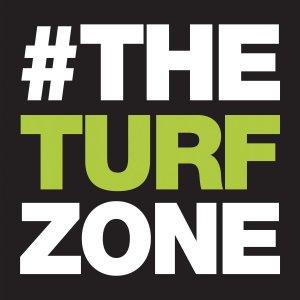The Turf Zone Podcast

Pennsylvania Turfgrass Council – SSRC Research Update
Pennsylvania Turfgrass
The SSRC continues to study infield soil mixtures. We previously developed a laboratory technique for this purpose. The technique uses a pneumatic “foot” and a 3D scanner to determine the critical water content at which a drying infield soil stops providing cleat-in/cleat-out performance and begins to chip or chunk out.
Infield mixes usually combine a washed sand with a fine-grained soil. Our working hypothesis is that different types of clay minerals affect the mixture’s behavior, regardless of particle size.
We have now tested several experimental infield mixes. These mixes use a sand similar to those used in USGA greens construction. They contain a range of sand contents (55-80%) and various clay minerals (kaolinite, illite, smectite, and iron oxides). We’ve found that the water content which yields optimum playability varies mostly with clay type. In other words, if both a “professional-type” and “recreational-type” mix contain the same type of clay, there is only a small difference in their critical threshold water contents. However, their strengths are quite different. In addition, for every clay type there is a unique sand content above which the cleat-in/cleat-out effect cannot be produced.
It also appears that the sand content required to produce a given type of mix is not absolute – it varies across clay types. For example, 60% sand is a common recommendation for pro-style mixes. However, our experimental mixes containing expandable smectite clay require almost 70% sand to perform similarly to illite mixes containing only 55% sand. If the current specification were followed “to a T” using smectite clay, a 60% sand mix containing pure smectite clay would be nearly impossible to groom.
So far, we have focused on the behavior of infield soils as they dry out. However, a more critical issue is the behavior of the mix during a rain event. We are currently developing a new way to measure the stiffness of a moist infield soil. This technique will draw a more complete picture of a given soil’s performance. The upcoming year of research will improve our quantitative predictions of how clay type and sand content interact to form the ideal infield mix.
The post Pennsylvania Turfgrass Council – SSRC Research Update appeared first on The Turf Zone.






 Visit Podcast Website
Visit Podcast Website RSS Podcast Feed
RSS Podcast Feed Subscribe
Subscribe
 Add to MyCast
Add to MyCast